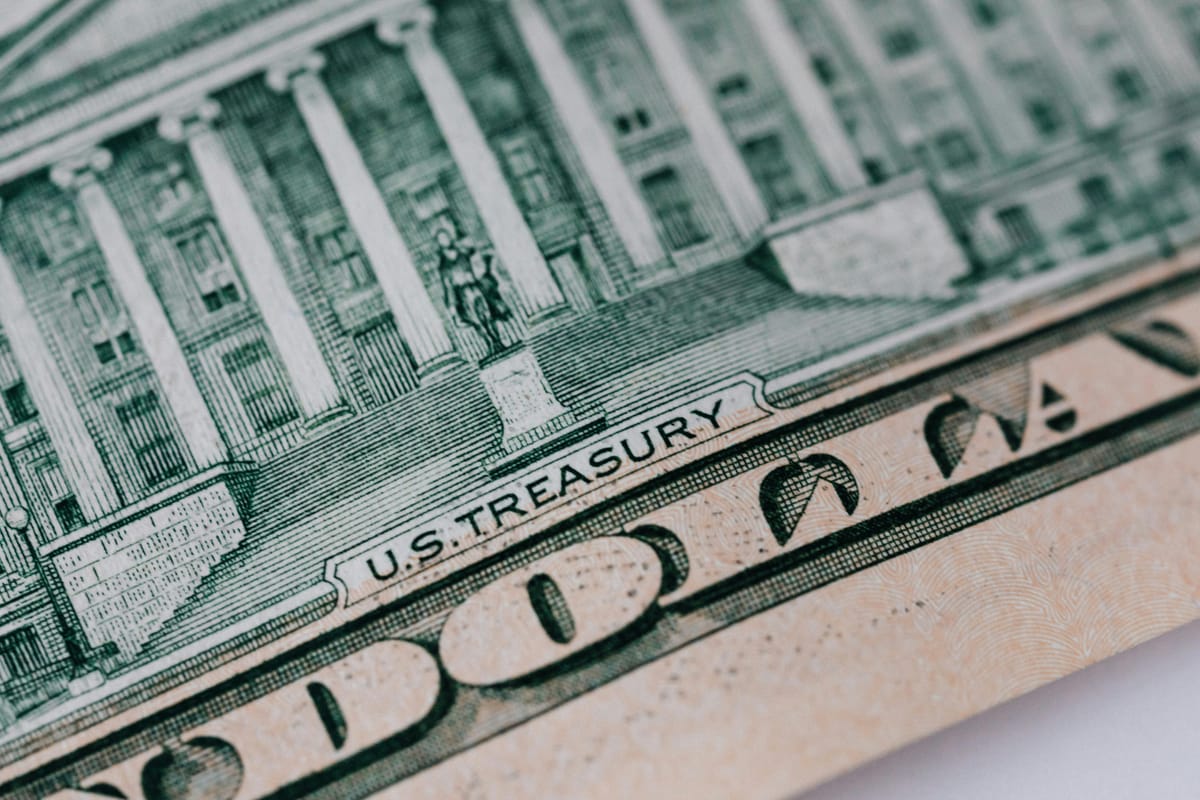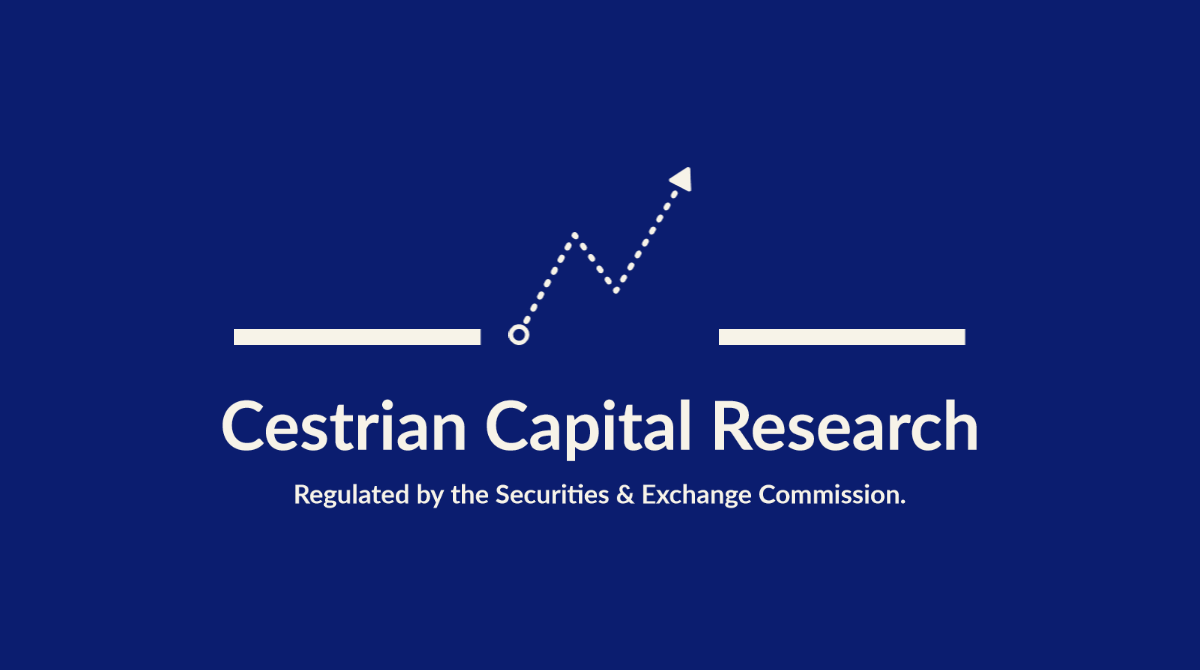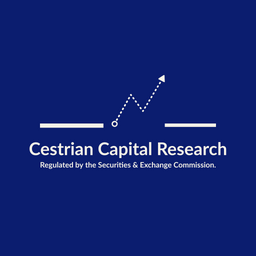SHV: Everything You Need To Know (No Paywall)

BlackRock's Treasury Bond ETF for 1-month to 1-year US Treasuries
DISCLAIMER: This note is intended for US recipients only and, in particular, is not directed at, nor intended to be relied upon by any UK recipients. Any information or analysis in this note is not an offer to sell or the solicitation of an offer to buy any securities. Nothing in this note is intended to be investment advice and nor should it be relied upon to make investment decisions. Cestrian Capital Research, Inc., its employees, agents or affiliates, including the author of this note, or related persons, may have a position in any stocks, security, or financial instrument referenced in this note. Any opinions, analyses, or probabilities expressed in this note are those of the author as of the note's date of publication and are subject to change without notice. Companies referenced in this note or their employees or affiliates may be customers of Cestrian Capital Research, Inc. Cestrian Capital Research, Inc. values both its independence and transparency and does not believe that this presents a material potential conflict of interest or impacts the content of its research or publications.
Yimin Xu, July 24, 2024
Today we are going to introduce SHV - iShares Short Treasury Bond ETF. This is a US Treasury ETF run by BlackRock holding Treasury bonds that mature in less than 1 year.

We will cover all the essential findings about SHV in this primer. In section 6, we also compare SHV with BILS, a similar short Treasury ETF.
We have a bonus Section 7 to cover today’s yield curves and calendar spreads!
Before we begin, I have an exciting news to share:
I have launched my private channel at Cestrian to provide trade ideas in 3 key areas:
- Income Producing Instruments – including US Treasury ETFs, fixed income funds and Business Development Companies (BDCs)
- Equities – including mega-cap tech, financials (banks, asset managers, exchanges, payments companies)
- Crypto – selected crypto stocks and the underlying coins.
Today’s article is a good example of the depth and breadth we get into for each instrument. You can claim your 7-day free all-access via my Launch Pass page now!

1. SHV tracks the ICE Short US Treasury Securities Index
When it comes to US Treasury ETFs, there are different Treasury indices a fund can track. The BlackRock iShare Treasury ETFs track indices by the ICE. An alternative index a fund can track is provided by Bloomberg.
SHV tracks the ICE US Treasury Short Bond Index that covers instruments maturing between 1-month and 1-year. BILS, an alternative sub 1-year Treasury ETF tracks Bloomberg’s 3-12 Month U.S. Treasury Bill Index instead. The implication is a duration difference which we will discuss more in Section 6.
The Index excludes Zero-Coupon bills, Inflation-linked securities, Floating Rate Notes, Cash Management Bills, and government agency debt.
SHV uses a representative sampling indexing strategy. This means the ETF does not fully replicate the index, but simply picks a range of investments that best represent the profile of the index. This is not an active strategy, as the fund managers would not attempt to defend the fund returns in a market downturn.

Since inception, SHV has underperformed the ICE index by 1.3% in total returns. However, it has outperformed the index by 84bp in the latest rate hike cycle.

A lot of the underperformance came from when the Effective Fed Funds Rate was near 0%. During that time, investors got very little returns while still having to pay management fees, thereby widening the gap between the ETF and the Index.
For the short-end investors, this is something we need to be mindful of in a rate-cut cycle, as falling dividends get a double hit from the management fees.
Speaking of the management fees, SHV charges 0.15%, which is more expensive that SGOV (the 0-3m Treasuries ETF).
2. A detailed view of SHV’s holdings

As of July 23, 2024, SHV hold 42 different Treasury securities.
They have a weighted average Yield-to-Maturity of 5.27% and a weighted average of Days-to-Maturity of 100 days (0.28 years). This is quite short given the fund’s mandate is up to 1-year.
I have listed the top 10 below. As you can see, the fund is far less concentrated than SGOV, with only 1 holding weighing above 5%.

Because of the rate-cut expectations in the next 12 months, we can see that many of the holdings actually yield less than 5%.

Finally, I mapped out SHV holdings’ Yield-to-Maturity versus their Duration. It is a good representation of the front-end yield curve.

This is how SHV’s dividend yield fared since the rate-hike cycle started, now sitting at 5.12%. Because of its days-to-maturity of just 100 days, I think US3M (3-Month Treasury yield) is the most suitable comparison.

3. SHV distributes monthly

SHV’s distribution mechanism is same as SGOV, meaning this section will read identically (if you haven’t had a chance to read about SGOV - see the link at the bottom of this article).
SHV’s price starts the month ex-dividend. It accrues interests from the underlying Treasury bills during the month, contributing to a daily incremental price increase. By the month-end, the ETF price reflects the total interest accrued for the entire month.
The fund distributes dividend at the beginning of the month. The ex-date is the first working day of the month, payable 4 working days later. The only exception is January, when the fund pays out dividend in mid-December instead (meaning 2 payouts in December).
All else equal, the ETF price drops by the amount of the dividend paid, which appears as a sudden decrease on the chart.
4. SHV trades at a small premium on most days
As SHV is an ETF, investors buy and sell its shares on the secondary market. This means sometimes the traded price will deviate from it net-asset-value (NAV).

On the overwhelming majority of days, SHV trades at a 2-5bp premium to its NAV. However, recently the market price that has been much closer to 0. Overall, this is not something investors should be too concerned about.
5. SHV AUM and fund flows
SHV’s AUM is just under $20 billion.
SHV’s fund flows fluctuate significantly with the forward interest rate expectations.

I have included the US 1-year Treasury yield in the above charts to show how much inflow and outflow SHV experiences as the short-end interest rates go up or down.
The end of 2023 dip in AUM is a telling example, when the bond market priced in 7 rate cuts for 2024. Investors started leaving SHV likely to rotate into the longer-end bonds, whose prices are more sensitive to interest rate changes.
As the rate cut expectations alleviated in 2024, SHV has recovered some inflows.
6. How does it compare with BILS?
Thanks to subscribers asking me this question on SGOV this week, I am including a quick comparison between SHV and BILS.
BILS tracks the 3-12 Month U.S. Treasury Bill Index, thereby avoiding Treasuries maturing under 3 months, while SHV’s maturities start with 1-month. BILS is also a much smaller fund with $3 billion AUM.
Other key differences:
- SHV has an effective duration of 0.27 years, while BILS is 0.35 years. This means BILS is slightly more sensitive to interest rate changes.
- SHV has an expense ratio of 0.15%. BILS is cheaper at 0.135%.
- SHV has a 30 Day SEC Yield of 5.11%, while BILS has a SEC Yield of 5.19%. This measures the yield achieved after deducting the management expenses.
7. Latest Yield Curves (July 24, 2024)
The Fed Funds futures are verging on 3 cuts for 2024 (Sep, Nov, Dec) and 4 cuts for 2025.

SOFR 3-Month futures:
SOFR futures help traders hedge forward interest rates. E.g. a yield of 3.46 for March 2027 contract means that the market expect the interest rate in the specific 3 months between March 17th and June 15th of 2027 to be 3.46%.
This is different to a bond where the yield covers the entire period from T+2 to the maturity date (e.g. 3 years).

SOFR September Calendar Spreads
We use the September (U) contracts for each calendar year to work out the implied rate cuts / hikes for the 12 months period between each September. Most of the cuts in the upcoming cycle are expected between September 2024 and September 2025.

8. If you missed my latest note on SGOV, you can catch up here:



